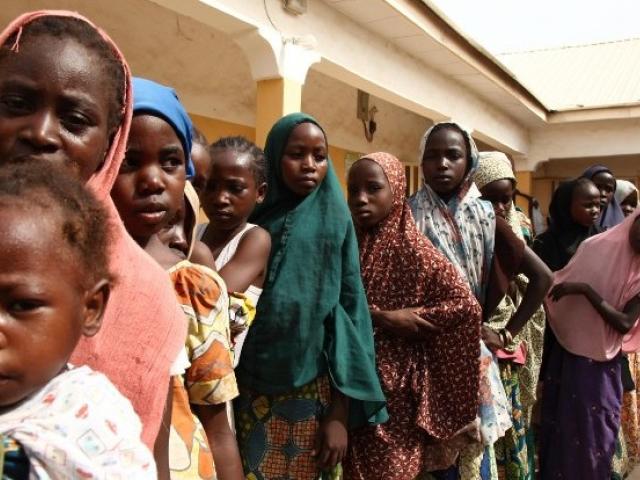-
Makusidi is correct that women in Niger on average give birth to more children than in any other state in the north-central geopolitical zone.
-
But the total fertility rate in the state is less than that quoted by the health commissioner – at 5.8 children per woman, not 7.5, according to most recent data.
-
Experts told us fertility rates might be higher if teen pregnancies were also counted and that more could be done to support family planning and contraceptive-use in the region.
To draw attention to the need for more awareness about reproductive health, Dr Muhammad Makusidi, the commissioner for health in Nigeria’s Niger state, made two claims.
“The fertility rate of women in Niger state is 7.5% and it’s the highest in the north-central [geographical zone],” Makusidi said, according to the New Telegraph newspaper. This meant that “each woman averagely gives birth to 7.5 children”.
The December 2021 article, headlined Niger most fertile state in north central zone, reported on the commissioner’s meeting with representatives from the World Health Organization (WHO) and other public health organisations.
Some families in the state had as many as 35 children, Makusidi said. But are his numbers about fertility supported by the evidence?
The commissioner’s office confirmed he had been accurately quoted. They promised to send us the sources of the data and we will update this report when we hear back.
Dr Jumoke Ogunro, a consultant obstetrician and gynaecologist, advised us to focus on the total fertility rate in order to fact-check the claim. Ogunro is also a member of the board of Ask The Paediatricians Foundation.
The WHO defines the total fertility rate as the average number of children a group of women would have over the course of their reproductive lives. The reproductive period is defined as 15 to 49 years. (The full definition can be read here.)
What the most recent data shows
The most recent data on fertility state-by-state is from the 2018 demographic health survey, published in October 2019 by the National Population Commission and the United Nations Population Fund, among others. Demographic health surveys are conducted every five years.
The 2018 survey found that the total fertility rate for Niger state was 5.8 children per woman. The 2013 edition of the survey found it to be 6.1.
The survey interviewed 41,821 women across the country from August to December 2018. They were asked about their birth history in the three years leading up to the survey.
Other reliable data sources are:
-
The 2018 Statistical Report on Women and Men in Nigeria, produced annually by the National Bureau of Statistics (NBS). It found Niger’s total fertility rate to be 6.4 that year. (Note: The 2020 report does not include this information.)
-
The 2016/17 multiple indicator cluster survey by the NBS and the United Nations Children’s Fund. This also found Niger state’s total fertility rate to be 6.4 children per woman.
Rate could be higher due to teen pregnancy
The total fertility rate is usually simply described as the average number of children per woman, which makes it an intuitive measure of fertility, Ogunro told Africa Check.
She said there was every possibility Niger’s total fertility rate could have increased because girls in the state still married young.
According to the demographic survey, 26.1% of women aged 15 to 19 in the state had already begun having children.
“However, since we are scientists, it is better to do things based on available data rather than make projections based on certain indices,” Ogunro said.
Based on the available data we therefore rate the claim as incorrect.
Nigeria’s north-central region is made up of seven states: the Federal Capital Territory-Abuja, Benue, Kogi, Kwara, Nasarawa, Niger and Plateau.
According to the 2018 demographic health survey, Niger does have the highest total fertility rate in the zone.
Nationally, the total fertility rate is 5.3 children per woman. The rate in rural areas (5.9) is much higher than in urban areas (4.9). The highest rate is in the north-west state of Katsina at 7.3, while the lowest is in Lagos at 3.4.
Strengthening family planning and contraceptive use
There are a number of factors that influence fertility rates in Nigeria according to Garba Abdulkarim, a professor of reproductive health at the University of Maiduguri and family planning unit head at the University of Maiduguri Teaching Hospital.
The cost of contraception is one. Many women can’t afford contraception and would rather use the money to feed their children, he told Africa Check.
Second, he said “the side effects that arise from the use of contraception also prevents many women from using contraceptives. Service providers need to constantly let these women know that the side effects are not complications; they eventually disappear”.
A third reason was that, according to research, “men in the northern region tend to reject family planning, not only in Niger state. They believe it is God’s will that we have many children. That notion needs to be addressed”.
The 2018 Nigeria demographic health survey showed that Niger had the lowest share of women in the north-central zone using any method of contraception, at 7.6%.
Contraceptive use was significantly higher in the Federal Capital Territory-Abuja (23.6%), and Plateau (22.7%) and Kwara (22.4%) states. The closest state to Niger was Nasarawa, at 7.6%.
The 2016/17 multiple indicator cluster survey found that Niger had the second-lowest usage of any method of contraception by women in the region, at 11.2%.
Abdulkarim added that the federal government could support family planning in ways such as subsidies. Religious and traditional leaders should also be involved in sharing the benefits of family planning and contraception in the community, as should area development councils in the country.








Add new comment